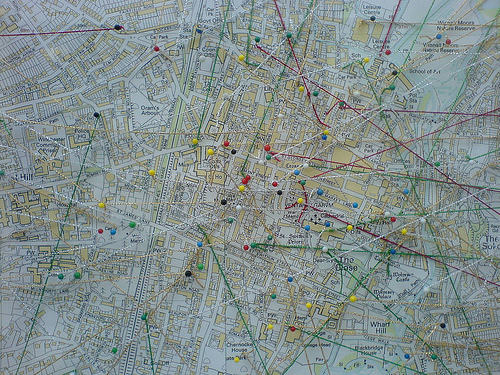
Image Credit: zabdiel
A few months ago, we talked about creating content for the top, middle, and bottom of your sales funnel.
We also told you that the sales funnel has changed and looks more like a maze than a funnel.
And we recommended that every content marketer address each stage of the sales funnel with consistent, quality content that focuses on users and what they need at each stage of the buying process.
Today, I want to talk a little more about your sales funnel—and how to map it out.
Step one: figure out your funnel
Before we can talk about where your users, teams, and tone of voice fit into the sales funnel (all of which are important things to understand), we need to know what it looks like.
The top of your funnel is the first contact users have with your brand. In many cases, this first touch-point is usually social media, an infographic, a video, or a blog. For others, events might be the first domino in the sales process. And for still others it may be customer referrals or review sites.
The middle of your funnel, where buyers have already given you their contact info and expressed interest in your product or service, is usually full of email marketing, blog posts, eBooks, and other content designed to provide deeper education for your prospective customers and remind them that you’re there.
The bottom of your funnel (or the really qualified leads) is some of the last contact your users have with your brand before they buy. Often, the content in this stage of the funnel is very personal and is controlled by the sales team. Personal phone conversations, emails, content selected for this specific prospect.
And then there’s post-sale—where many companies let up on their efforts, having already earned a new customer. There’s still a lot of opportunity here to create future sales, testimonials and positive reviews, and brand advocates.
Which means when you’re mapping your sales funnel, don’t forget to map the post-sale as well.
Post-sale content may include further content marketing pieces (blog posts, eBooks, etc.) that meet the known needs of your audience, follow up emails from account managers or customer service, and content that requests feedback via poll or survey.
Okay, so you’ve got a sketch of a funnel…now what?
Once you have an idea of what paths your users are taking to get to know, buy from, and love your brand, it’s also important to be strategic about each stage in that sales funnel.
Here are a few key questions that will help you better understand and create content for each stage of the funnel:
- What are the business’ goals of this stage in the funnel?
- Who is looking at content at this stage of the funnel? (Who is our target audience?)
- What are the user’s goals at this stage of the funnel?
- What is the emotional state of the user at this stage of the funnel?
- What kind of content is relevant for this stage’s goals, audience, and mindset?
Once you’ve written out your sales funnel stages, audiences, goals, and mindsets, it becomes much easier to figure out what kind of content belongs, what tone is appropriate, and where that content should lead.
Multiple audiences often mean multiple funnels
Keep in mind that when it comes to content marketing strategy, everything should be customized to your business goals and user needs. Some companies will have a really simple funnel with a well-defined top, middle, bottom, and post-sale. Others will have multiple sales funnels that meet the needs of different user types.
For example, if you’re creating content for a university, you might be addressing parents, prospective students, current students, alumni, donors, and faculty. All of these audiences will have different needs and likely the business will have different goals for each one. This means that there are probably a number of sales funnels to be mapped and each might look just a little bit different.
What comes next?
Once you understand your sales funnel, it’s time to map your teams to each stage, hone your process, and use that information to better serve user needs and meet business goals.

